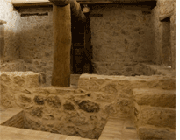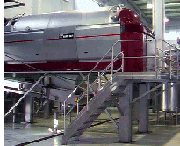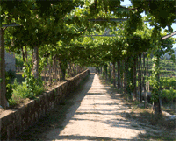Different types of soils and climates coexist in this region and influence the style of the wines produced. The so-called Vinhos Verdes have characteristics very different from those of wines produced in other regions. An example is their characteristic carbon dioxide.
 Most grape varieties used in the production of Vinho Verde are grown exclusively in the region, such as, for instance, the Loureiro grape variety. The vineyards and vine training systems vary in the nine sub-regions; therefore, a grape variety much grown in a given region may not be relevant in other sub-regions.
Most grape varieties used in the production of Vinho Verde are grown exclusively in the region, such as, for instance, the Loureiro grape variety. The vineyards and vine training systems vary in the nine sub-regions; therefore, a grape variety much grown in a given region may not be relevant in other sub-regions.
The winemaking process starts with pressing and is followed by alcoholic fermentation, which takes place at 12º-18ºC. Malolactic or secondary fermentation is often performed in these wines, being responsible for the natural carbon dioxide that is characteristic of the Vinhos Verdes and endowing them with the traditional “petillant”.
 The region is mainly known for producing white wine, though the production of red wine is also important. Most of the production of the latter is consumed in the region and produced from the Vinhão, Espadeiro and Borraçal grape varieties. The red Vinho Verde is fresh, deeply coloured and has aromas of wild flowers and spices.
The region is mainly known for producing white wine, though the production of red wine is also important. Most of the production of the latter is consumed in the region and produced from the Vinhão, Espadeiro and Borraçal grape varieties. The red Vinho Verde is fresh, deeply coloured and has aromas of wild flowers and spices.
The sub-region of Monção produces the monovarietal Alvarinho, one of the most famous wines of the region. It is citrine coloured with straw reflexes, has fruity and floral aromas and a persistent flavour that evolves to a distinct bouquet with ageing.
 In the region’s coast (sub-regions of Cávado and Ave) and in the sub-region of Lima one finds white wines produced with the Loureiro grape variety. These wines are characterised by their freshness, balanced body and structure, and by an intense floral aroma (notes of freesia and rose).
In the region’s coast (sub-regions of Cávado and Ave) and in the sub-region of Lima one finds white wines produced with the Loureiro grape variety. These wines are characterised by their freshness, balanced body and structure, and by an intense floral aroma (notes of freesia and rose).
The most important grape varieties in the region are Pedernã (Arinto) and Azal, which are used in the production of blend wines and result in citrine coloured wines with fruity aromas.
 Back to map
Back to map